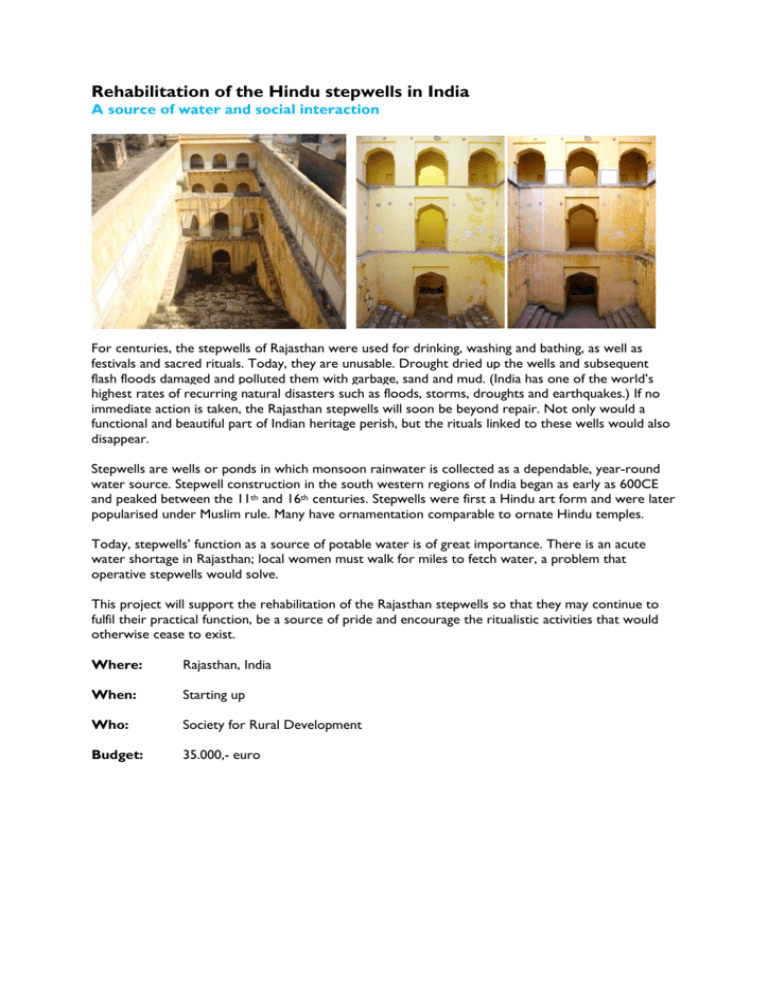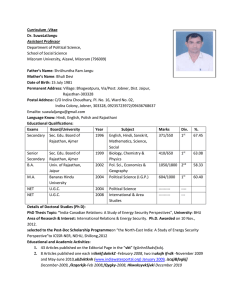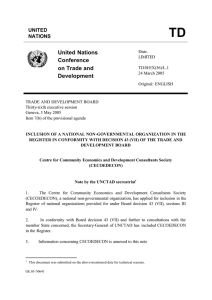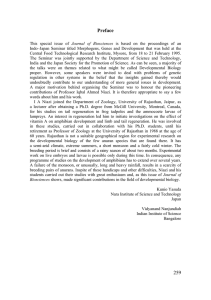Rehabilitation of the Hindu stepwells in India
advertisement

Rehabilitation of the Hindu stepwells in India A source of water and social interaction For centuries, the stepwells of Rajasthan were used for drinking, washing and bathing, as well as festivals and sacred rituals. Today, they are unusable. Drought dried up the wells and subsequent flash floods damaged and polluted them with garbage, sand and mud. (India has one of the world’s highest rates of recurring natural disasters such as floods, storms, droughts and earthquakes.) If no immediate action is taken, the Rajasthan stepwells will soon be beyond repair. Not only would a functional and beautiful part of Indian heritage perish, but the rituals linked to these wells would also disappear. Stepwells are wells or ponds in which monsoon rainwater is collected as a dependable, year-round water source. Stepwell construction in the south western regions of India began as early as 600CE and peaked between the 11th and 16th centuries. Stepwells were first a Hindu art form and were later popularised under Muslim rule. Many have ornamentation comparable to ornate Hindu temples. Today, stepwells’ function as a source of potable water is of great importance. There is an acute water shortage in Rajasthan; local women must walk for miles to fetch water, a problem that operative stepwells would solve. This project will support the rehabilitation of the Rajasthan stepwells so that they may continue to fulfil their practical function, be a source of pride and encourage the ritualistic activities that would otherwise cease to exist. Where: Rajasthan, India When: Starting up Who: Society for Rural Development Budget: 35.000,- euro











